1. Slurry agitation – a silent killer on Irish farms

Slatted sheds should be well ventilated and evacuated before any agitation takes place.
Where available, properly functioning tested personal gas alarms should be worn.
They are worth their weight in gold if they save a life but should not be solely relied upon – extreme care still needs to be taken when agitating slurry.
These alarms pick up the presence of deadly hydrogen sulphide gas which is produced when slurry is stored for long periods in slatted tanks.
Alarms should be used as a safety aid for farmers.
This gas is released upon agitation when the slurry crust is broken.
Humans cannot smell it. Evacuate all people and animals from the slatted house to prevent death.
Open all doors to allow as much fresh air to blow through the shed as possible and work upwind from the agitator if you must work near the shed.
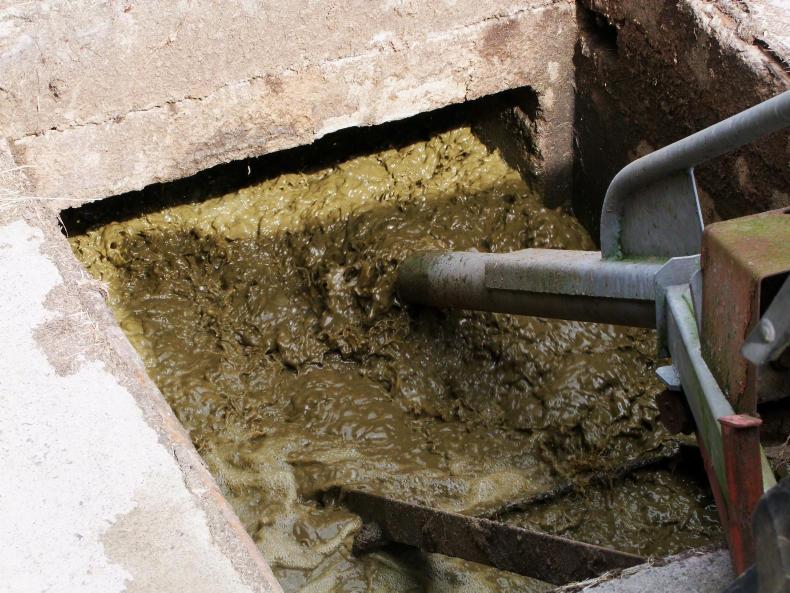
If possible, agitate on a windy day to disperse any gas that is released.
2. Underground slurry tanks
Underground tanks can harbour deadly gases as outlined above.
When it comes to emptying them, take a few minutes to make the manhole cover or agitation point safe. Put the hose into the tank and close the remaining manhole covers to minimise the chance of someone falling in. Reduce the risk and save a life.
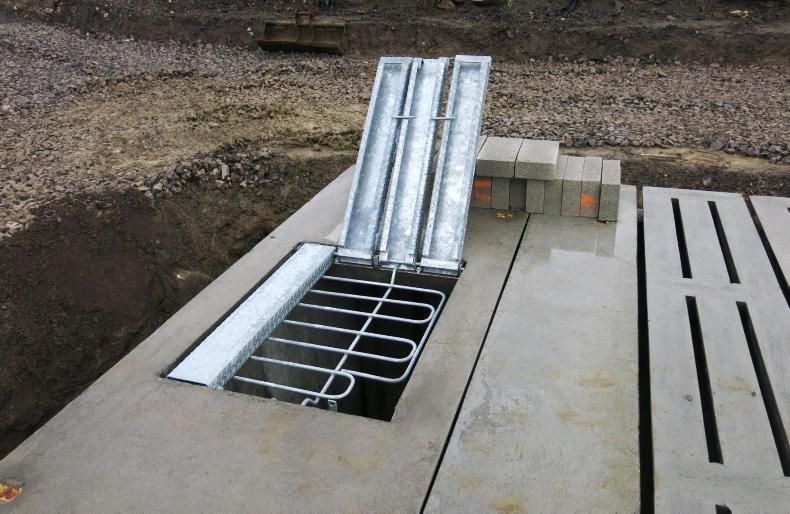
You should carry out similar checks on lagoons and open tanks.
Make sure that the fences around them are in good condition. Lagoons should have some sort of exit system, such as a line of tyres or a ladder fitted, in case should someone fall in. Slurry tankers by their nature are simple machines.
Unfortunately, however, it’s the PTO and the frequency of the operator being near it that is the problem.
Take five minutes to check the cover and if it is damaged repair it or, better again, replace it.
When it comes to changing the vacuum pump from empty to fill, do this when the PTO is not running.
The more frequently you approach a PTO when it is running, the more chances you have of getting caught in it with life altering or fatal consequences.
Be smart and make it safe today.
3. Loading and housing cattle
With grass growth slowing and weather deteriorating across the country, cattle are either being sold or housed as ground gets wetter.
Rounding up these animals can be a stressful time for both man and beast. After months of freedom in the fields away from close human contact, cattle can be nervous when it comes to loading – be aware of this.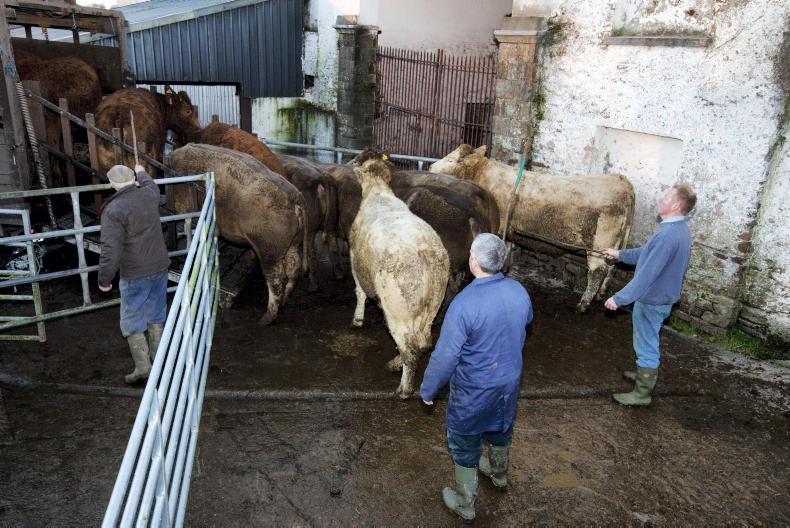
A kick from a 500kg+ animal can be fatal. Goring or trampling by an angry cow defending her calf or an angry bull results in serious injury or death.
Have an escape route planned so if you fall, you can roll under a gate. If you have to work alone, don’t get yourself into a situation you cannot get out of easily.
Most cattle can be harmless but it only takes one to potentially change your life forever. If buying cattle, their temperament can often be unknown.
Bear this in mind when bringing the cattle home from the mart.
4. Hedge-cutting
This is a job that is carried out more often than not by a contractor with a safety shield surrounding them in their cab. Watch out for debris flying from the flails of this machine.
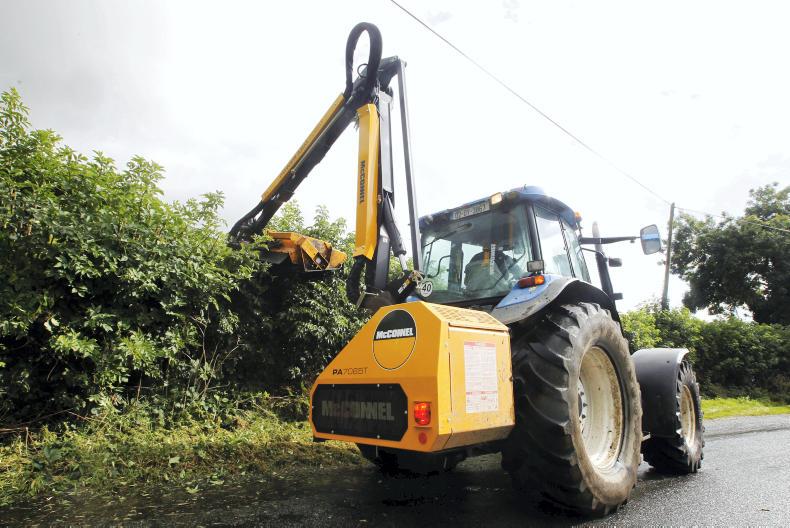
Stand well clear and make sure all personnel, including children, are kept well clear.
A flail striking a hidden stone in the grass of the ditch can be propelled at huge speed towards an unsuspecting observer.
5. Chainsaws
It’s a traditional time of year for gathering timber from around the farm for fuel. Chainsaws are the tool of choice for this job.
Used correctly and safely, they make the job of cutting timber a lot quicker. However, in the wrong or inexperienced hands, they can be fatal.
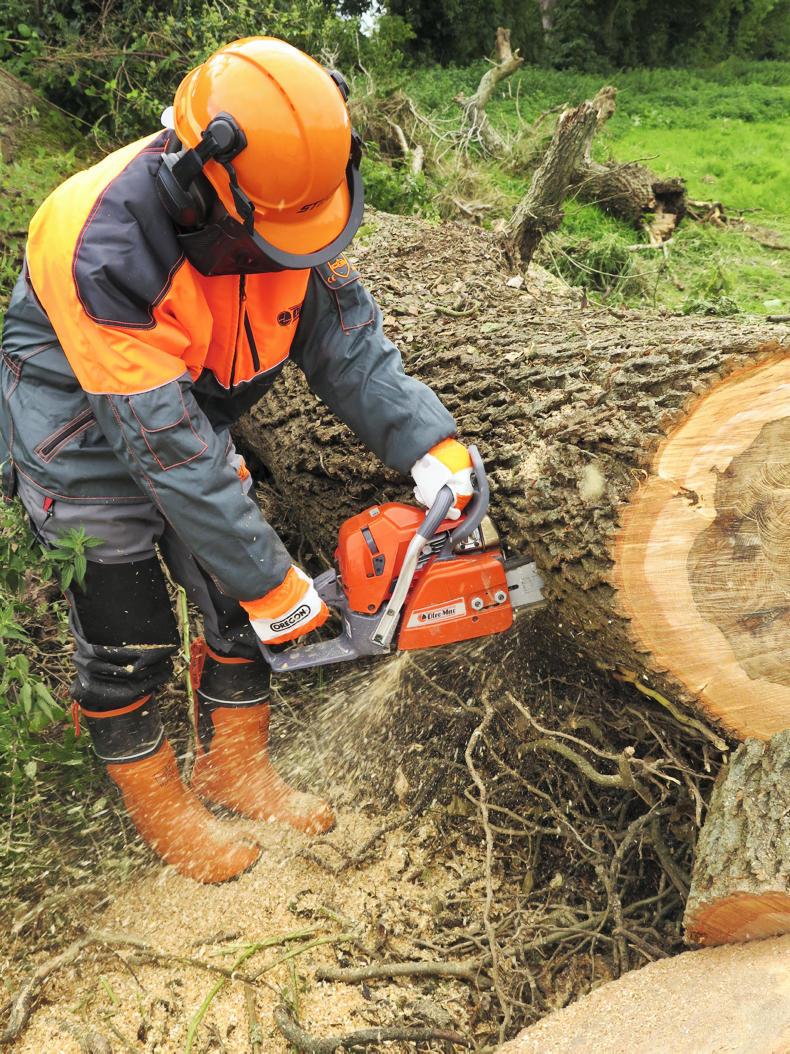
Before any chainsaw is started, steps to make operating them more safely must be taken. If you are unsure if the chainsaw is safe to use, stop, and ask a trained professional to check it over. Personal protective equipment should also be worn.
A helmet, ear defenders or ear plugs, safety glasses, a shield, safety jacket, specific chainsaw trousers that block the chain upon contact, and safety boots should all be considered.
Remember, the chain is designed to cut through timber with ease.
Consider the consequences if it were to come in contact with a human limb at full speed.
Read more
More on the ESB Safe Family Farms programme
1. Slurry agitation – a silent killer on Irish farms

Slatted sheds should be well ventilated and evacuated before any agitation takes place.
Where available, properly functioning tested personal gas alarms should be worn.
They are worth their weight in gold if they save a life but should not be solely relied upon – extreme care still needs to be taken when agitating slurry.
These alarms pick up the presence of deadly hydrogen sulphide gas which is produced when slurry is stored for long periods in slatted tanks.
Alarms should be used as a safety aid for farmers.
This gas is released upon agitation when the slurry crust is broken.
Humans cannot smell it. Evacuate all people and animals from the slatted house to prevent death.
Open all doors to allow as much fresh air to blow through the shed as possible and work upwind from the agitator if you must work near the shed.

If possible, agitate on a windy day to disperse any gas that is released.
2. Underground slurry tanks
Underground tanks can harbour deadly gases as outlined above.
When it comes to emptying them, take a few minutes to make the manhole cover or agitation point safe. Put the hose into the tank and close the remaining manhole covers to minimise the chance of someone falling in. Reduce the risk and save a life.

You should carry out similar checks on lagoons and open tanks.
Make sure that the fences around them are in good condition. Lagoons should have some sort of exit system, such as a line of tyres or a ladder fitted, in case should someone fall in. Slurry tankers by their nature are simple machines.
Unfortunately, however, it’s the PTO and the frequency of the operator being near it that is the problem.
Take five minutes to check the cover and if it is damaged repair it or, better again, replace it.
When it comes to changing the vacuum pump from empty to fill, do this when the PTO is not running.
The more frequently you approach a PTO when it is running, the more chances you have of getting caught in it with life altering or fatal consequences.
Be smart and make it safe today.
3. Loading and housing cattle
With grass growth slowing and weather deteriorating across the country, cattle are either being sold or housed as ground gets wetter.
Rounding up these animals can be a stressful time for both man and beast. After months of freedom in the fields away from close human contact, cattle can be nervous when it comes to loading – be aware of this.
A kick from a 500kg+ animal can be fatal. Goring or trampling by an angry cow defending her calf or an angry bull results in serious injury or death.
Have an escape route planned so if you fall, you can roll under a gate. If you have to work alone, don’t get yourself into a situation you cannot get out of easily.
Most cattle can be harmless but it only takes one to potentially change your life forever. If buying cattle, their temperament can often be unknown.
Bear this in mind when bringing the cattle home from the mart.
4. Hedge-cutting
This is a job that is carried out more often than not by a contractor with a safety shield surrounding them in their cab. Watch out for debris flying from the flails of this machine.

Stand well clear and make sure all personnel, including children, are kept well clear.
A flail striking a hidden stone in the grass of the ditch can be propelled at huge speed towards an unsuspecting observer.
5. Chainsaws
It’s a traditional time of year for gathering timber from around the farm for fuel. Chainsaws are the tool of choice for this job.
Used correctly and safely, they make the job of cutting timber a lot quicker. However, in the wrong or inexperienced hands, they can be fatal.

Before any chainsaw is started, steps to make operating them more safely must be taken. If you are unsure if the chainsaw is safe to use, stop, and ask a trained professional to check it over. Personal protective equipment should also be worn.
A helmet, ear defenders or ear plugs, safety glasses, a shield, safety jacket, specific chainsaw trousers that block the chain upon contact, and safety boots should all be considered.
Remember, the chain is designed to cut through timber with ease.
Consider the consequences if it were to come in contact with a human limb at full speed.
Read more
More on the ESB Safe Family Farms programme












 This is a subscriber-only article
This is a subscriber-only article
















SHARING OPTIONS: